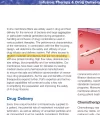Thx. So that sounds like a wash (fewer injections but more peptide each - am dealing with HGH).
When Jano reports a % purity and dimer, what do you take from that wrt possible immunogenic content? I assume higher purity, lower dimer is indicative of _likely_ lower immunogenicity, but do you have a sense of how to judge the value of that relative to the value of filtering? For example, should one be concerned at all about 96% vs. 98% purity, or 1% dimer vs. undetectable. Do those numbers really matter much relative to the protection one gets from filtering?
First, and this is very important.
All rHGH (and every other peptide) purity tests are conducted AFTER being filtered with a .22um PES filter.
"Impurities" larger than .22um, and there are likely many in that UGL produced vial, are left out of the purity calculation.
Whether it's aggregates or glass particles from a cheap vial, they're removed before the analysis.
An analogy would be filtering your home water first, then having it analyzed for contamination.
So if you love the result of a Jano test, you need to FILTER it first to know you're injecting the same product the test represents. Otherwise, you're getting what the test showed+the contaminants caught by the filter.
(this is not a limitation specific to Jano's testing, who is the most credible of all the labs UGL peptide users use, but all of them, since they all rely on HPLC as the sole method for testing).
Pharma, the FDA, and researchers use multiple of testing peptides to detect all impurities, since they all have "blind spots".
In my opinion, the Jano results give you an idea of production quality. If there's 0% dimer "and related proteins", and very high purity, whoever produced that rHGH went thorough the labor intensive purification steps after making a batch.
Unfortunately besides missing any impurities removed by the .22um filter, which are going to be the most immunogenic, the testing also doesn't reveal anything about stability. Even if you tested using multiple methods, and found a low level of impurities shortly after reconstitution, 2 or 7 or 15 days later there could be 100x more contamination from aggregation because the UGL formulation, unlike pharma, didn't include the necessary ingredients to ensure the proper PH is maintained.
The TLDR is this. There are so many variables outside of our control, if and until comprehensive testing becomes available, the best course of action is to choose a product with the best purity/dimer result you can find, in the smallest dose vials practical so they're used up in a short amount of time after reconstitution, and then filter to minimize whatever level of contamination is present.






